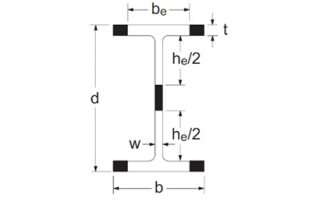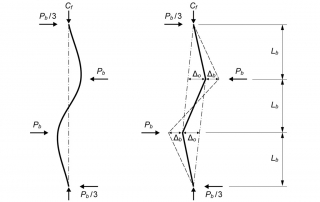Torsional Section Properties of Steel Shapes
Torsional section properties found in the Handbook include the St. Venant constant (J) and the warping constant (Cw). General formulas do not usually incorporate the contributions of the round fillets [...]
Class 4 Sections in Axial Compression
Two methods are provided in CSA Standard S16-14, to determine the factored compressive resistance, Cr, for sections that exceed the width (or diameter)-to-thickness ratios specified in Table 1 of the [...]
Historical Structural Steels
Engineers are often faced with the challenge of determining the yield strength or tensile strength of structural steel members found in historical steel buildings. This becomes particularly important for rehabilitation [...]
Increase in Probable Strength of HSS Braces
Advantages of HSS as braces The popularity of hollow structural section bracing stems from two facts: a) Square and circular HSS do not have a minor axis Typically, the compressive [...]
Bracing Design and Initial Misalignment
The bracing force, Pb, required to stabilize a laterally unsupported member is a function of several factors including the initial out-of-straightness or misalignment at the brace point, ΔO, and the displacement of the bracing system, Δb, according to S16-14 Clause 9.2.6.2:
CISC provides the Steel Knowledge BLOG as a part of its commitment to the education of those interested in the use of steel in construction. Neither CISC nor the authors assume responsibility for errors or oversights resulting from the use of the information contained herein. When a solution is suggested it may not necessarily apply to a particular structure or application, and is not intended to replace the expertise of a professional engineer, architect or other licensed professional.




